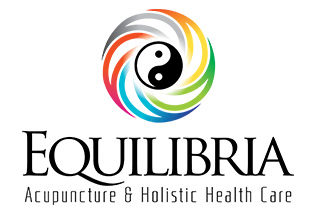
Having recurring migraines is similar to parenting a temperamental toddler. When they go from being annoying to actively disruptive and mildly infuriating, there is often little one can do but grit your teeth and persevere. The helpful suggestions for managing this occurrence involved a mixture of expert opinion, anecdotal hearsay, individual tinkering and a big dose of patience. So where does acupuncture fit into this picture?
We’ll start with expert opinion. Consider a 2013 systematic review that compared actual and placebo effects of several interventions for the treatment of migraines 1. The study showed that sham acupuncture had a stronger placebo effect than the oral pharmacological placebo, and furthermore the placebo effect of acupuncture was shown to be as strong as the true, active-drug treatment. So the research currently suggests even if one were to receive only the placebo benefit of acupuncture, it may still be as effective as taking a pharmaceutical for the treatment of migraines.
That is promising research, but let’s add anecdote for good measure. It is possible to stop a migraine in its tracks if one is able to see an acupuncturist during the acute stage of migraine. The release of endogenous opioids, the body’s natural pain-relievers, combined with the stimulation of endorphins, can turn the worst headache into no more than a mild annoyance within that hour-long session. Acupuncture also treats nausea and vomiting, and it balances the hypothalamic-pituitary-adrenal axis 2, which is implicated in migraine pathology 3.
Now for individual tinkering. Acupuncture is hyper-individualized, with each treatment responding to your body’s symptoms at that exact moment, in a way specific to only you. Coming in for acupuncture during the acute stage provides the acupuncturist with valuable information about how your body is experiencing the strongest symptoms of migraine attack. This informs the treatments given afterward to prevent or reduce the severity of the next migraine. Weekly treatments downregulate stress hormones and create a more clear baseline from which to observe physiological patterns such as dietary and environmental triggers. This can help make your individual-lifestyle adjustments more effective in reducing migraines.
And finally, patience is still the key when treating migraines. Acupuncture must be used regularly for an individually determined period of time in order for its full benefit to become apparent. In the same way that eating one kale leaf will not make one a beacon of health, neither will having just one acupuncture treatment. The goal is to set up and then reinforce a pattern of signaling in the body that is closer to the “rest and digest” mode of existence and further away from the “fight and flight” mode that governs our modern lives. Each acupuncture treatment helps reinforce the beneficial relaxing mode that reduces the prevalence of migraines.
1) Meissner, K, et. al. Differential effectiveness of placebo treatments: a systematic review of migraine prophylaxis. JAMA Internal medicine. 2013 Nov 25;173(21):1941-51.
2) Wang, S-J, Zhang, J-J, and Qie, L-L. Acupuncture relieves the excessive excitation of hypothalamic-pituitary-adrenal cortex axis function and correlates with the regulatory mechanism of GR, CRH, and ACTHR. Evidence based complementary and alternative medicine. 2014; 2014.
3) Tietjen, G. and Peterlin, B. Childhood abuse and migraine: epidemiology, sex differences, and possible mechanisms. Headache. 2011 Jun: 51(6):869-879.



